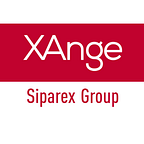Forget Autonomous Driving, say hello to Autonomous Walking
By: Cyril Bertrand
We are thrilled to announce the $15M financing of Wandercraft, which is engaged in one of the most exciting medical & technological challenges of our time : to let walking-impaired persons walk again.
Cleverly defying Silicon-Valley rules
I first met the Wandercraft team 3 years ago. I was impressed by the team but gave them a polite “no thanks”: I told them that they would need over €100 million and 5 years to build their first functioning prototype. According to popular VC wisdom, it takes $20 million to develop software, $50 million for hardware, and $100 million to develop systems that include software, electronics and mechanics. 3 years and €10 million later, Wandercraft’s prototype was walking. I was baffled, which of course is a pretty good start to do a new investment.
In the meanwhile, the two identified leaders on the market have struggled to fully deliver the big promise: Ekso Bionics and Rewalk do sell their devices by the hundreds to healing centers, but the patients have to use crutches. This is not full autonomy : your hands are busy and you carry the full weight of your body on the crutches. There are millions of walking-impaired patients waiting for a solution, and the market has not delivered the solution so far.
At this moment, I knew my interest for the subject would only keep growing… and I started giving a closer look to the market.
It’s about more than just walking again
There is much more to exos than “simply” allowing paraplegic persons to regain mobility and walk again. As I learned when I started reviewing Wandercraft and the exoskeleton market, the human body activates a great deal of vital bodily functions when walking: intestinal, blood flow, breathing, bone rebuilding, etc. All these functions are substantially impaired if the body remains in a sitting posture all day, with a direct impact on life expectancy.
Of course I bumped into a few hard questions in the due diligence. One nagging long-term risk was this one: are exoskeletons still going to be of any use if in 10 years, science has progressed so much that we have started to repair the body itself? That’s when I overheard a surprising remark in the healing center where the prototype is currently tested. One of the professionals said — with a healthy dose of enthusiasm — that we should not exclude, in a few years, to witness “nerve regeneration”. What does that mean? As it happens, the standing posture is one of the keys to healing, as it directly activates nerve regeneration. In other words, the exoskeletons could be seen as a personal trainers for patients receiving at the same time in-body treatments and/or surgery.
A world-premiere, and a tough challenge
The first team to allow paraplegic persons to walk without assistance — and without crutches! — will score a global hit. Wandercraft’s first exoskeleton, which is still in test, already does that: it lets them stand-up and walk autonomously. It is a world premiere, and a much more complex venture than it sounds: from a dynamic perspective, walking step after step is comparable to a controlled fall. Such a project calls for a multidisciplinary team of algorithms, hardware and electronic experts who can build top-notch software, mechanics & mechatronics — and make them work without harming the patient. This is immensely complex.
They needed our money now
Wandercraft needs to accelerate the development of its exoskeleton and enter the global rehabilitation center market. The team will also use the funds to obtain a medical device approval by the European healthcare authorities. We all are very fortunate to be able to rely on the experience of our co-investor CEMAG who has been through the process many times
Patients also need a specific device for their homes to lead their everyday lives, while maintaining a continued standing posture for as long as possible. Operating the exoskeleton in healing centers is costly, and can only be done for a limited amount of time each week: the team will therefore use the funds raised to develop a personal / B2C version of the device.
To the Wandercraft team
There definitely is a long road ahead of us, but bear in mind that you are not alone in this unique journey. You can rely on our full support to take on the challenge: this is what VCs are made for.
